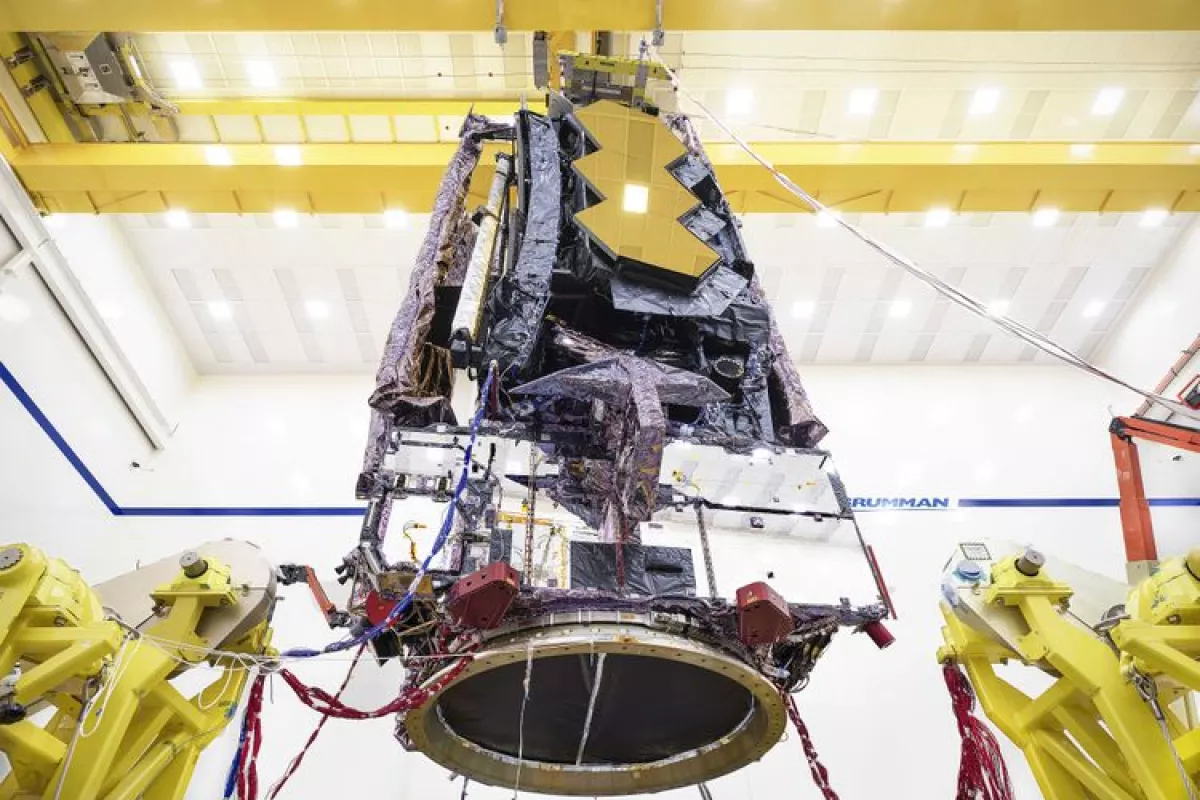NASA's James Webb Space Telescope has passed a major milestone, completing its prelaunch environmental testing. The space agency and primary contractor Northrop Grumman subjected the fully assembled spacecraft to several weeks of acoustic and sine-vibration tests to determine whether it can withstand the rigors of a rocket launch and its journey to orbit.
For even the simplest spacecraft, environmental testing is a crucial development step. Not only must a satellite be able to operate in the hostile environment of space, it must also survive the noise and vibrations of its rocket ride out of the Earth's atmosphere.
This is even more important for the James Webb Space Telescope (JWST), which is not only the largest space telescope ever built, but also the most complex with a 6.5-m (21-ft) primary mirror made up of 18 gold-plated beryllium hexagonal mirror segments measuring 1.32 m (4 ft) across that has to unfold once in orbit. It also has to operate while cooled to a temperature below -223.2 °C (-369.7 °F).
The telescope, along with its suite of instruments and intricate support systems, is scheduled to launch atop an Ariane 5 rocket from French Guiana on October 31, 2021 before traveling to the second Lagrange point (L2) of the Earth-Sun system, 1.5 million km (930,000 mi) from the Earth, where it will revolve around an empty point in space where the gravitational forces of the Earth and the Sun balance one another out.
The JWST was put into Northrop Grumman’s acoustic testing chamber where it was subjected to high-frequency oscillating sound pressure levels above 140 decibels to mimic the effects of a rocket launch on its hardware, science instruments, structure, and electronics.
After this acoustic test, the spacecraft was moved to another chamber and placed on a shaker table, where it was subjected to lower frequency sine-vibration tests simulating vertical and horizontal accelerations greater than those expected in flight. The idea was to set up resonances and see how well the craft withstands them.
According to Northrop Grumman, the next tests will involve deploying the spacecraft's five-layered sun shield, wing deployments of the primary mirror, and a full systems' evaluation before its packed up and shipped to South America.
"The completion of environmental testing is a major step forward in our preparations for Webb’s historic launch and a testament to the remarkable dedication of the team," says Scott Willoughby, vice president and program manager, James Webb Space Telescope, Northrop Grumman.
The video below shows the James Webb Space Telescope being tested.
Source: Northrop Grumman





